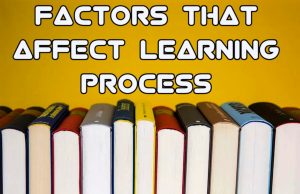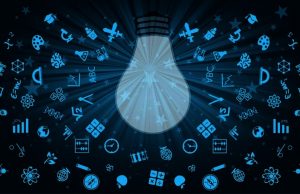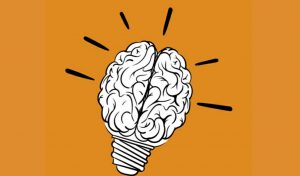Factors That Affect Learning Process: Learning is a process that is both cognitive and social. It is cognitive because it requires paying attention, seeing, thinking, analyzing, interpreting, and finally providing meaning to the seen occurrences. Learning is also a social process since we live in a society and are therefore susceptible to the feelings and experiences of the world with which we interact, and these experiences shape our ideas, conceptions, and knowledge of the world.
Every person is unique, and our capacity and desire for learning have varied tremendously. When we look at the people in our house, we can see that each one has a certain talent. While one child excels in academics and receives excellent marks/grades, another youngster excels in athletics and wins gold medals in all sports and games. Even if we examine our talents, we may see that we excel at some activities while failing miserably at others.
Learning is heavily impacted and mediated by two types of factors: personal and environmental. Motivation, ability, and interests are examples of personal elements. Environmental issues have societal, economic, and cultural implications. These two elements work together in the same system. Both personal and environmental elements occur in the context of the environment.

Recommended: Best 10 Online Universities to attend in the world
Top 10 Major Factors that Affect Learning Process
1. Intelligence: There is no commonly recognized definition of intelligence. So, intelligence is defined in terms of operations. It is the ability to solve problems, think, reason, relate to others, deal with emotions, develop interests, have a sense of right and wrong, and live in line with our circumstances.

The capacity to solve problems and create commodities that society values is characterized as intelligence. It is argued that people have several bits of intelligence that operate from different areas of the brain and that the idea of a single intellect is thus erroneous. He also contended that different persons possessed varying combinations of the various bits of intelligence.
2. Aptitude: Aptitude is a person’s innate ability to perform a task. Some youngsters are naturally gifted in mathematics, while others must put in a lot of effort to succeed. Some youngsters are born with the capacity to sketch and paint, while others excel in sports and activities.

An aptitude test is used to assess a person’s ability to do a certain profession. Aptitude tests are also used to determine a child’s capacity to execute numerical crunching, verbal thinking, and spatial abilities, and to determine which of these he or she will acquire readily.
Also see: Best places to learn coding for free
3. Goals: Setting objectives will help us find our way. Our motivation is influenced by the sort of goals we establish. If we set urgent goals, such as passing an exam, our learning is only transient, and we quickly forget everything after the exam.

Setting long-term ambitions, such as becoming a doctor or an IAS officer, can help a student achieve new heights and contribute positively to life. Goals are proportionate to improvements in learning and performance.
It assists in directing our attention to the learning at hand, increasing our persistence in the learning at hand, and assisting us in adopting new and alternative tactics when old strategies fail. There are three sorts of goal orientations that will assist us in understanding student learning and performance. They are learning objectives, performance objectives, and work avoidance objectives. A person with a learning goal will have the intention to understand a concept or issue regardless of performance, which means that mistakes are irrelevant because the intention is to learn or improve. The primary goal of the performance is to appear competent in the eyes of others.
Learners who create performance objectives are continuously striving to win, to be the best, and to outwit their peers. There will be pupils who do not want to study or outperform their peers; instead, they wish to avoid effort. These pupils finish their courses swiftly and with little effort. These pupils are focusing on their avoidance skills.
Recommended: Major barriers to effective communication
4. Self-Concept (also known as self-esteem, self-image, and self-efficacy): Self Esteem refers to a person’s entire subjective assessment of his value. The importance that a person place on themselves. Self-Image: This relates to one’s own opinions of oneself — one’s strengths and talents, as well as one’s faults and limits.
“I’m brilliant in math and English but terrible at geography,” for example. Self-esteem: this is a self-evaluation that a person forms after engaging with the subject for some time. Self-Efficacy: This is a person’s belief in their ability to do tasks. This is about a person’s confidence in his capacity to achieve or complete a task.
5. Motivation: Motivation is an internal condition that stimulates and sustains conduct. Intrinsic motivation and extrinsic motivation are the two forms of motivation. Motivating an adolescent entails encouraging him or her to use his or her inner resources, feeling of competence, self-esteem, and autonomy.
Also see: Causes, Effects and Solutions to Conflict in Africa
6. Locus of control: The locus of control is a person’s belief about what causes good or negative outcomes in their life. Example: A student with a high internal locus of control feels that their work and talents influence their grades.
As they learn about their weaknesses, these pupils alter their study techniques. A student with a strong external locus of control feels that their exam outcomes are mostly determined by fate or chance.
7. Maturation and readiness to learn: There is always a suitable period for each individual to efficiently learn a certain ability. This proper period happens only when a person’s physical and intellectual development has evolved sufficiently to allow them to notice and deal with an issue.
For example, if a teenager is given project management skills, he may be unable to retain the information since his mental development has not progressed sufficiently. Maturity is defined as a semi-permanent change in an individual caused by biological aging, whether cognitive, emotional, or physical.
Also see: How long does it take to learn Python? Answered
8. Aspirational Level: The lever of aspiration relates to how far and where individuals set their attainment objectives and targets. It is decided by our previous successes and failures. For instance, if success or failure is ascribed to internal sources, success would result in pride, desire, and learning.
Failure results in a low degree of desire and learning. If a person believes he has control over his learning, he is considered to have a high level of ambition because he chooses to pursue more challenging activities and exerts more effort.
9. Learning Approaches: Every person learns differently. Another name for learning style is learning preferences. The way a person processes knowledge is also influenced by his or her learning style. Some students adopt a deep processing method that focuses on understanding the underlying meaning, while others use a surface processing strategy that concentrates on memorizing.
A person’s learning style (or preferences) may also be related to his or her preference for utilizing his or her senses. Some examples are visual, auditory, and kinesthetic learners.
Also see: Money vs Education, Which is More Important? Debate
10. The media: All media are essentially delivery media since they deliver, i.e., transmit information from the sender to the recipient. The learner is a receiver and consumer of information delivered through media. Print media and non-print media are the two major kinds of media.
The term “print media” refers to text or printed materials. It is cost-effective and has historically been utilized for instructional tools. However, technology is neither the only nor the best medium for delivering education. Non-print media, often known as contemporary electronic media, have distinct characteristics that, in some situations, allow learning far faster than print media. This aids in meeting a variety of learning objectives more efficiently than printed material.
Certain non-print media forms and delivery mechanisms can help pupils study more effectively. These emotions energize pupils and inspire them to engage in the teaching-learning process. As a result, media may help kids learn better, but appropriate media use necessitates the application of well-developed media-specific abilities. If these talents are not adequately developed, the message may be misconstrued or received, accepted, and reacted to uncritically.
Recommended: How to apply for scholarship abroad and get one
Conclusion
Any discussion of learning seeks to uncover the elements that influence it, whether these aspects are psychological, socio-cultural, school-related, or linked to the teaching-learning process. Intelligence, motivation, self-concept, attitude, interests, learning styles, emotions, and so on are all important psychological elements influencing learning. Similarly, socio-cultural aspects influencing learning include family, home environment, neighborhood, community, peer-group, and so on.
Similarly, school climate, school regulations, physical infrastructure, co-curricular activities, teaching approach used, methods of learning, learning media used, and so on are some of the school-related elements that have a major influence on student learning. To moderate the learning process, these numerous elements interact in various ways and combinations. It is quite difficult to separate any of these characteristics from the others. You must have comprehended how each of these components is conceptualized and understood, as well as its susceptibility to individual variation and link to learning.

Edeh Samuel Chukwuemeka, ACMC, is a lawyer and a certified mediator/conciliator in Nigeria. He is also a developer with knowledge in various programming languages. Samuel is determined to leverage his skills in technology, SEO, and legal practice to revolutionize the legal profession worldwide by creating web and mobile applications that simplify legal research. Sam is also passionate about educating and providing valuable information to people.
We have other factors like situation and interaction